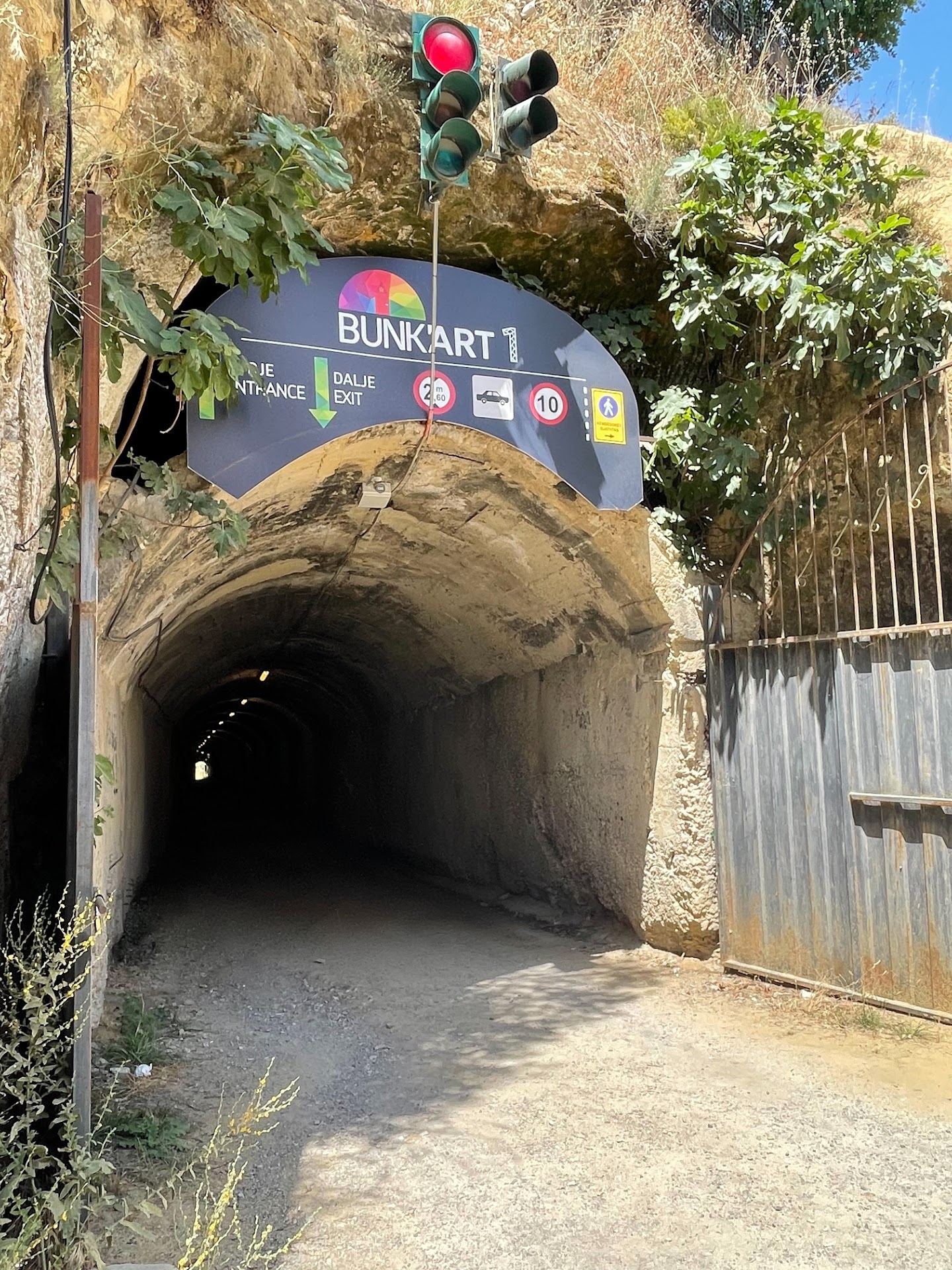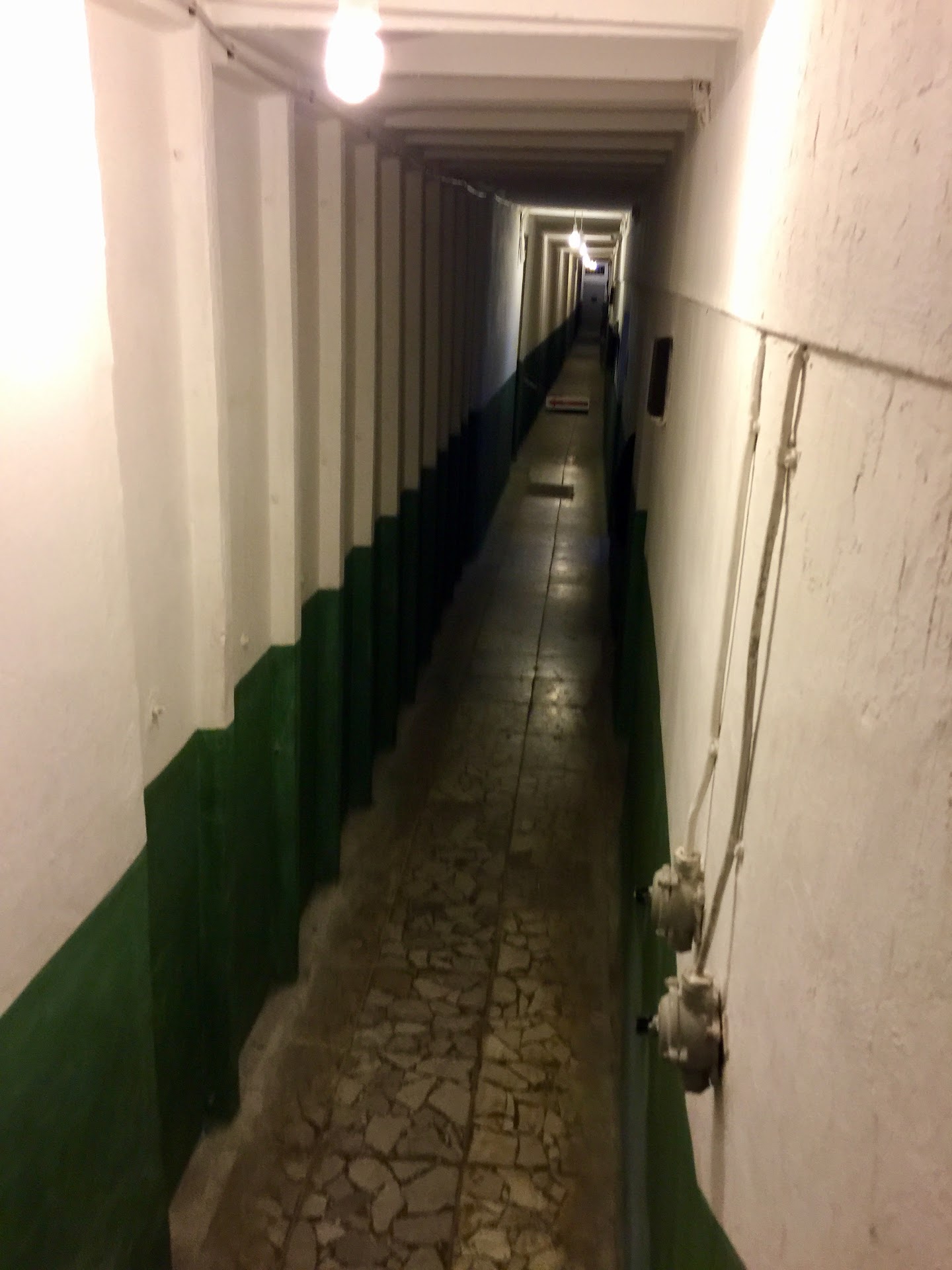The most frustrating experience I have had during my week in Albania!
1st problem: On Google Maps, this location is simply indicated as "Bunk'Art," and indeed you can buy the Bunk'Art tickets here, but there are TWO separate Bunk'Art locations requiring different tickets, and only ONE of them is located here. I didn't know this until it was too late.
2nd problem: The price list posted at the ticket office here doesn't give you all the information you need or may want to know, such as the fact that Bunk'Art 2 is in a different part of the city. Also, that list is complicated and confusing. Turns out there's an audio guide provided only if you buy the Bunk'Art 1 ticket separately from the #2 ticket, and the ticket seller is not very keen on selling the audio guide for some reason.
3rd problem: The two men who sell the tickets are NOT happy to answer your questions; they just repeatedly refer you to that confusing and incomplete sign, and at one point the ticket seller (the "boss" as the other guy calls him) put his head in his hands and said, "Oh my God!" because he couldn't handle being asked questions from a visitor before the visitor makes a decision and the payment. (That's when I was asking about a combined audio guide with a combined ticket.)
As if that wasn't infuriating enough, he did NOT tell me when I bought my combined ticket (for both locations) that Bunk'Art 2 is located in another part of the city; he only told me that I have three days to use the ticket, and I didn't understand why he emphasized that point until after I had finished touring Bunk'Art 1 and asked another visitor where Bunk'Art 2 was. It's very unusual for a museum to be situated this way. When I complained to the side guy, he claimed he had told me and everyone else that #2 is located in the center of the city, but if he did say that it was just mumbled.
Those two men will blame you for not knowing the answers to your questions, and claim you should have known that you were buying a ticket for two very separate locations even though it's omitted from the price list and not emphasized by the ticket seller or promoter.
4th problem: After all this, the ruder of the two men (the "Oh my god" boss) refused to refund me the 400 lek difference in price when I had found out what I'd actually paid for. I just ended up giving my ticket to another visitor standing nearby.
Nonetheless, the museum is extensive and interesting for people who enjoy WWII and Communist history. If you are here and don't have more than 1-2 hours to spend, just visit Bunk'Art 1 here and maybe skip the...
Read moreBunk'Art 1 in Tirana, Albania, is a fascinating historical museum that offers visitors a unique look into the country’s past, particularly during the communist era under Enver Hoxha. The museum is housed in a massive underground bunker built in the 1970s, originally intended as a shelter for Albania's political and military elite in the event of nuclear war.
Highlights:
Historical Significance: Bunk'Art 1 serves as both a museum and an art installation, showcasing Albania's history from the Italian invasion during World War II up until the fall of communism. The exhibits detail the isolationist policies of Hoxha's regime, the harsh realities of life under communism, and the military paranoia that led to the construction of thousands of bunkers across the country.
Atmosphere: The setting itself is unique—walking through dimly lit tunnels and rooms with concrete walls, you get a real sense of what it might have been like to live in such a place. The bunker’s cold, sterile environment contrasts sharply with the vivid stories and artifacts displayed.
Exhibits: The museum features a range of exhibits, including photographs, documents, military uniforms, and personal items from the communist era. Some rooms are dedicated to specific themes, such as secret police activities, propaganda, and the isolation of the Albanian people.
Art Installations: In addition to historical exhibits, Bunk'Art 1 also includes modern art installations that creatively explore themes of isolation, fear, and control, adding a contemporary layer to the historical narrative.
Guided Tours: The museum offers guided tours, which can be very informative and help visitors understand the complex history of Albania during the 20th century. The guides are often very knowledgeable and passionate about the subject matter.
Visitor Tips:
Time Required: Allow at least 2-3 hours to fully explore Bunk'Art 1, as there’s a lot to see and absorb. Accessibility: Due to its underground location, the museum might not be easily accessible for people with mobility issues. Photography: Photography is generally allowed, but check for any restrictions in specific areas.
Conclusion:
Bunk'Art 1 is a must-visit for history enthusiasts and anyone interested in understanding Albania's complex past. The combination of historical artifacts and modern art creates a powerful experience that lingers long after the visit. It’s a sobering reminder of the impact of totalitarian regimes and the lengths to which they will go to...
Read moreThis is a combination historical museum and art exhibition. It is set in the actual bunker that the totalitarian dictator Enver Hoxha had constructed to shelter him and his leadership cronies from a nuclear, chemical or biological warfare attack.
After getting to the outskirts of Tirana (bus is the best option here) you walk through a 200 metre tunnel (originally built for vehicle access to the bunker complex) to the entry kiosk. After paying a 500L adult entry fee you can pay 200L more for an app-based audio guide.
(Note: if you don’t have earphones for your smart phone you will not be given the code required to activate the audio guide. We were very frustrated that this information was not available in any promotional information that we consulted before our visit. While we can’t be certain, we’re quite sure an audio guide would have enhanced the experience significantly).
Once you’re past the entry kiosk you walk another approximately 200 metres (on a slight uphill incline) to the bunker entrance. You are immediately struck by the brutalism of the construction; this is a place that was built for holocaust survival, not aestheics or creature comfort.
Without an audio guide we were left to read the various interpretive panels throughout the large exhibition. By and large the panels are presented in an “old-school” interpretive style - heavy on facts (names; dates) while for the most part light on compelling narrative and storytelling. In the exhibits where storytelling is used (such as the saga of the aircraft crash that left 26 American medics and nurses stranded in Albania during WWII, and their subsequent escape) the exhibtion really comes to life.
There are also some quite fascinating and compelling art pieces on offer. Near the end of the installation there are two particulalry powerful pieces. One, a room of mirrors that illustrates the interplay between militaritic language and modern digital modalities (like video games). And the second, an extraordinarily emotive animated piece projected on a concrete wall over one of the final stairwells as you near the exit. On the latter case it’s well worth taking 2 ½ minutes to watch the whole piece (we watched it twice).
While we feel that there is an enormous amount of unrealized potential here, we’re also aware that the installation has only been open since 2016. We hope that there are plans to continually improve the exhibits as they tell an important story.
Well...
Read more


